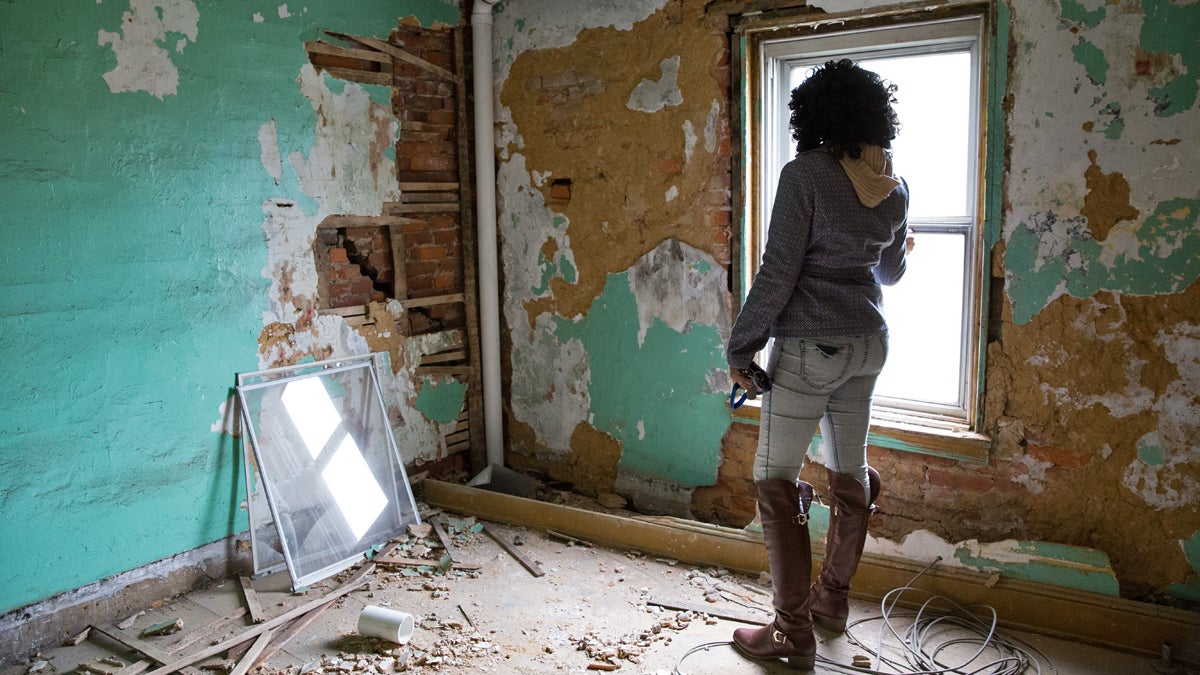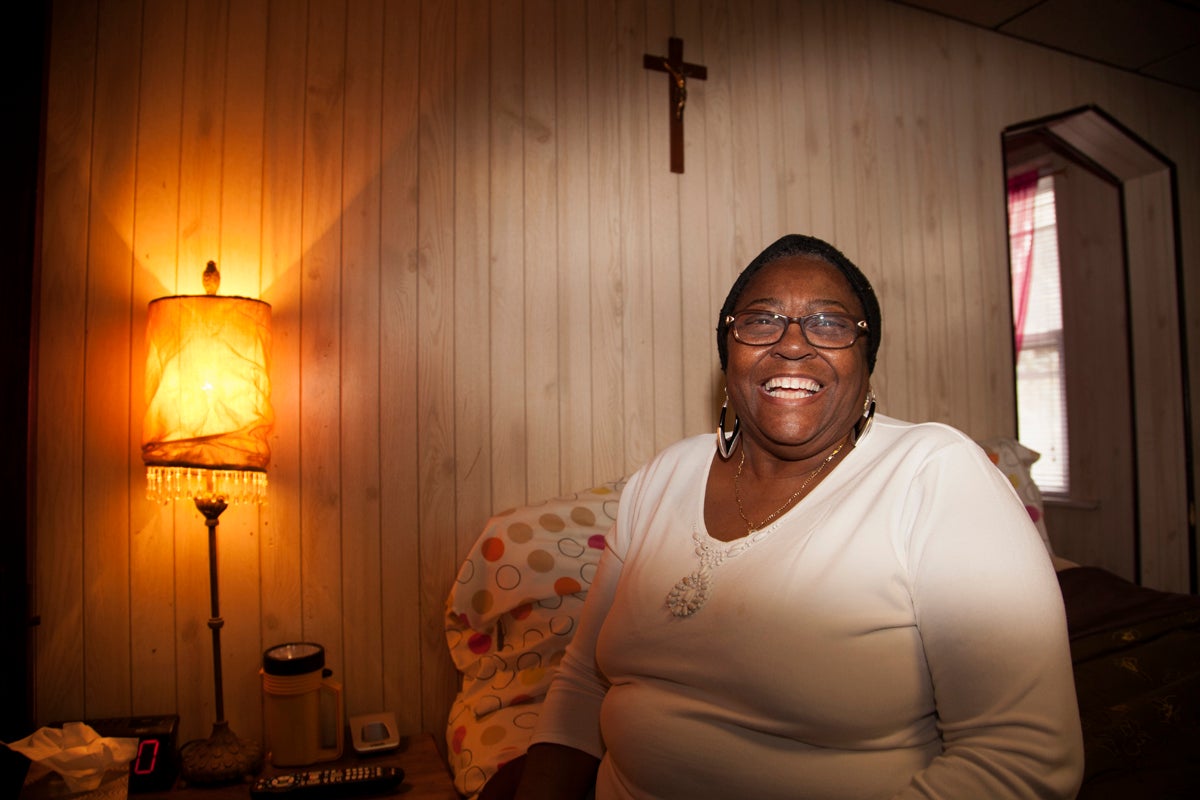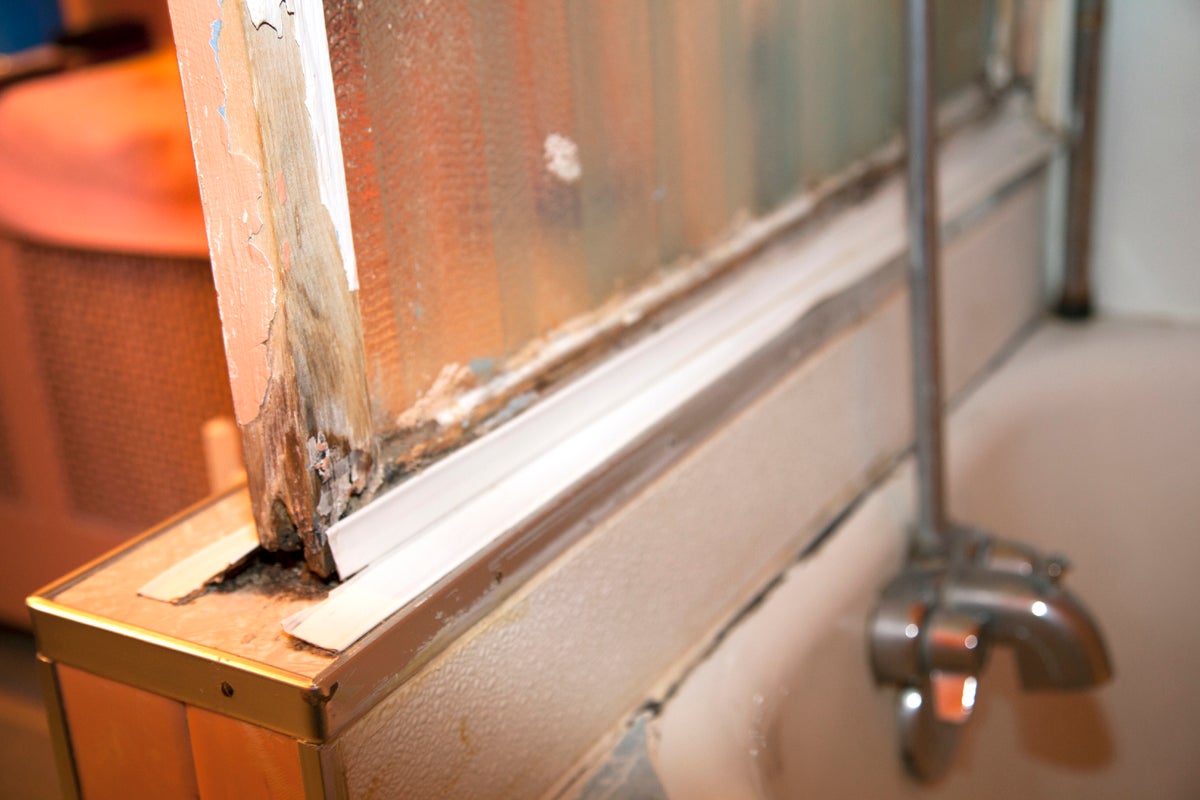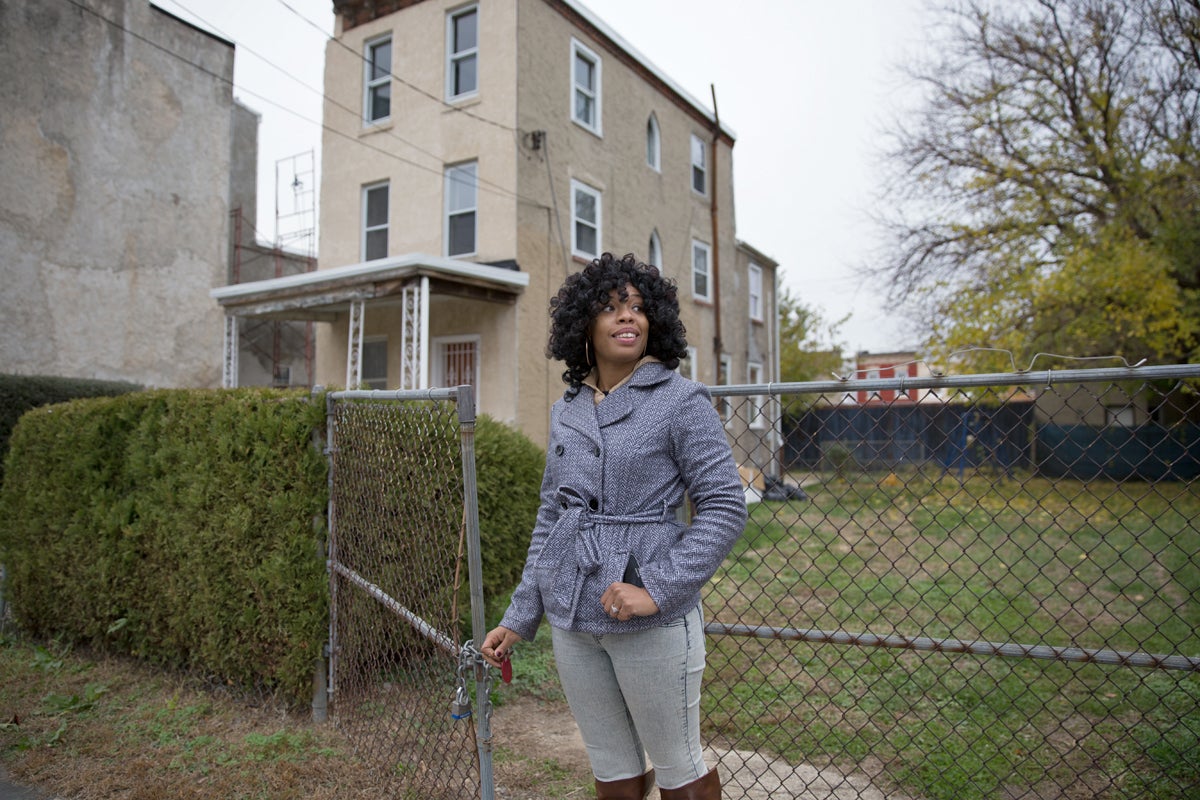Pennsylvania’s houses are old — and that’s a problem for everyone
Listen
Nymiura Lee stands on the third floor of her grandparents' home in North Philadelphia. The conditions in the home became too dangerous for the family to stay. (Lindsay Lazarski/WHYY)
Some homes are filled with lead paint and ancient wiring. Others are simply falling apart with age. And many residents can’t afford the repairs.
Around Pennsylvania, you’ll see lots of historic homes: romantic 18th century red brick houses, stately Victorian-era mansions and dense rowhomes built for industrial workers.
The state’s houses, half of which were built before 1959, can give a neighborhood character. But they can also cause a lot of problems.
Some of the old homes are filled with health hazards like lead paint and ancient wiring. Others are simply falling apart with age.
And many residents can’t afford the repairs.
In Pittsburgh, Deborah Stevens-Fowler, who is 66 years old, lives in a brick house built in 1925. When she moved in 20 years ago, the house was in good condition. But it needs work now.

Deborah Stevens-Fowler in her bedroom in the Penn Hills neighborhood of Pittsburgh. (Irina Zhorov/WESA)
The bathroom in Stevens-Fowlers’ home has dated fixtures and rotting wood. There’s no ventilation in the bathroom and the window does not stay closed, leading to standing moisture and mold.

The bathroom in Stephens-Fowler’s home. (Irina Zhorov/WESA)
Mold also creeps up the walls of the basement, which floods every time it rains. Stevens-Fowler says she always rushes to turn on her sump pump, which she has to do manually.
“But then if the pump runs too long, the motor starts to burn.” she said. “So you gotta come down, unplug it for a while and let it cool off. It’s a little trying.”
She can’t run the pump at the same time as her other appliances because overloading the old electrical wiring in the house causes the power to go out.
Stevens-Fowler also has health issues which she thinks the mold and old materials in the house exacerbate.
But she is retired and lives on a fixed income, so she can’t afford to fix the house. She has applied for several programs that offer free repairs to homeowners. In the meantime, she’s staying put.
Leaving the neighborhood
Sometimes conditions in these old homes get so bad that residents have to move out; often that means families are displaced, and they lose important gathering places.
Nymiura Lee, 28, spent every summer and holiday of her childhood at her grandparents’ rowhome in North Philadelphia.

Nymiura Lee stands in front of her grandparents’ home in North Philadelphia. (Lindsay Lazarski/WHYY)
Lee’s grandparents raised seven children in the house. Then came the nieces, nephews and grandchildren. “No matter what was going on with our family, we always knew we could come here,” Lee said. “All of our birthday parties were here. And the entire neighborhood would come.”
Lee’s grandparents bought the house in the 1950s. But over time it started to crumble. There were holes in the floor and the walls. The roof was collapsing. Mold was everywhere. But the family didn’t have the money for repairs.
After Lee’s grandparents died, her mother took over the house. But it was too dangerous to live in, and the cousins, aunts, uncles…everyone scattered, moving to different states.

Lee looks out the window of the family’s home. (Lindsay Lazarski/WHYY)
On the third floor of the house, the walls are covered with doodles drawn by Lee’s younger cousins and the faint remnants of rose-patterned wallpaper.
Lee said this place was her family’s foundation. “Everything that we had was here,” she said. “Once this was gone, we didn’t have anything else.”
For now, Lee lives in a small apartment in Philadelphia with her two children and her mother. Rebuilding Together Philadelphia, a nonprofit group that repairs homes, is helping her family with the rowhome. The group has spent tens of thousands of dollars fixing the roof and the plumbing, clearing out mold and making other repairs. And the group helped the family secure a loan for other work.
A neighborhood problem
Empty houses — some of them abandoned for good — can have ripple effects throughout a community.
For one thing, they can damage the houses attached to them or become dumping grounds and hot spots for crime, says Carrie Rathmann, director of strategic partnerships for Habitat for Humanity in Philadelphia. “That affects property taxes and value, but it also affects morale and just the attitude of the block,” Rathmann said.
These abandoned homes are “a negative festering anchor on the street,” Rathmann said.
So deterioration is contagious. But something else is, too: revitalization.
People take more pride in their homes when other houses in their neighborhood are rehabilitated, says Alan Sisco, deputy director of Rebuilding Together Pittsburgh.
“Every single time we fix up any house anywhere in the city, one of the first things you see is the guy across the street comes out and cuts his grass for the first time in like six weeks, guaranteed,” Sisco said.
And the thing is, it’s a lot cheaper to help somebody repair an old house, often a home that person loves, than to pump dollars into building new structures.
There are limited resources for these kinds of repairs. Federal, state and local programs have years-long waiting lists. Combined, Rebuilding Together and Habitat for Humanity fix fewer than 200 homes a year in each city.
“There is very little public money available for programs like mine that renovate houses for existing owner-occupants,” Sisco said.
To make the most of the money they do have, the programs have started concentrating their efforts in neighborhoods that are seeing other development, as well as fixing up several houses on a block at once. That way, the rehabs go beyond helping one family and are actually part of a bigger effort to limit blight.
Some nonprofit groups are also hoping to provide homeowners loans that don’t have to be paid off until the house is sold or transferred. The idea is that these loans will give people the boost they need to stay in their homes and also put less strain on the funding available for free repairs.
WHYY is your source for fact-based, in-depth journalism and information. As a nonprofit organization, we rely on financial support from readers like you. Please give today.



